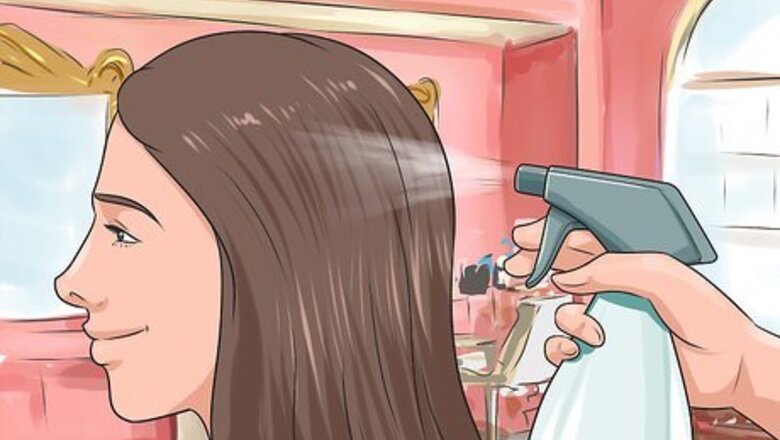
views
Cutting Even Layers
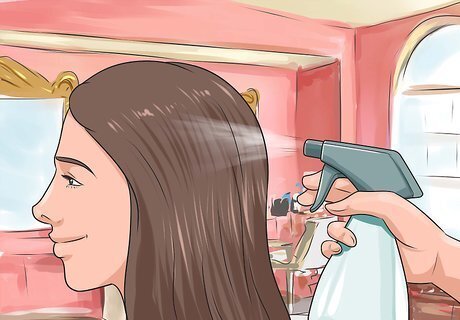
Wet the hair. Fill a spray bottle with warm water. Saturated the hair with the warm mist—your hair should be damp, not dripping. Use a fine tooth comb to detangle your wet hair—carefully remove snarls and knots from the locks. Keep the spray bottle nearby. As the hair dries, re-wet the locks.
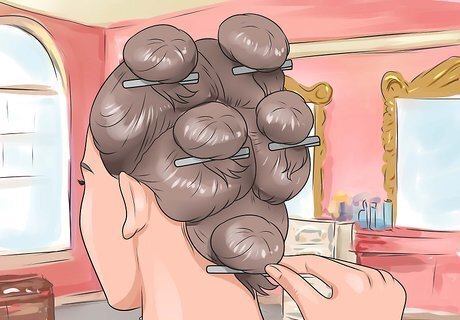
Part the hair. Part the hair down the center of the head—from the top of the forehead to the base of the skull. Part the hair horizontally twice—once at the top of the ears and once at the base of the ears. This will create a section on the top of the head, known as the top box, 2 side sections, and 1 section at the base of your skull. Twist each section and secure it with a large hair clip. Make sure the right sections are even with the left sections. If the hair you are cutting is thicker, consider dividing it into 7 sections: top, right side, left side, right crown, left crown, right nape, left nape, and a ½ inch band of loose hair at the hairline. Begin by parting the hair in a straight line from just behind one ear to the just behind the other ear. Create a part on each side of the head along the parietal ridge—approximately 4 finger widths above the tops of your ears. This will allow you to section off the hair on the top of the head. Comb the hair towards the top of the head, twist, and secure it with a clip. Comb, twist, and clip the hair on the left and right sides of the head. Part the hair down the center of the crown. To isolate the left and right crown sections, part the hair horizontally from just behind the ear to the center part. Comb, twist, and clip the two sections. Divide, comb, and clip the remaining hair at the nape of the neck into a left and a right section. Unclip each section 1 at a time. Remove a ½ inch section of hair along the perimeter of the hair line.
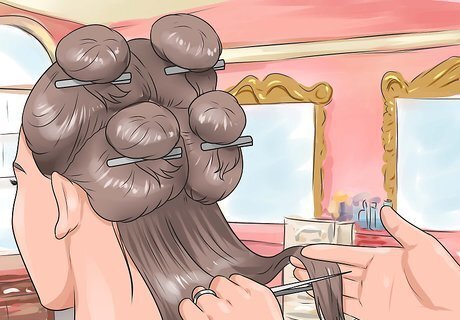
Create the first travelling guide. Unclip the bottom section. Gather a small segment of hair at the center of your bottom section. This segment will become the first traveling guide. A traveling guide moves with the area being cut.The most recently cut segment of hair in a section assumes the role of the traveling guide. It is held up to the next segment of hair and used as a ruler. Determine the length of the bottom layer. When you are deciding the length of the 3 layers, remember that the shorter the hair, the smaller the difference in the layers should be. The 3 layers may differ in 2 to 4 inches on long hair and 1/2 an inch to 1 inch on shorter hair. Insert the segment between the forefinger and middle finger of your non-dominant hand. Slide the fingers towards the ends—pulling the segment at a 90° angle—until your fingers have arrived at your desired hair length. Trim the excess hair with a pair of sharp shears. Consider cutting between ½ inch to 2 inches off—you can always go shorter!

Cut the remainder of the section. Use the travelling guide, the most recently cut segment of hair, to measure the length of the next segment. Insert the traveling guide and the next segment of hair between your forefinger and middle finger. Move the fingers towards the ends—pulling the hair at a 90° angle—until you reach the end of the traveling guide. Cut the new segment of hair so that it is the same length as the traveling guide. The freshly cut segment is now the travelling guide. Repeat the process until the entire section is cut. Check the evenness of your trim periodically. Pull the hair in multiple directions and at varying angles to check the evenness of the cut. Trim any uneven pieces before moving onto the next section of hair
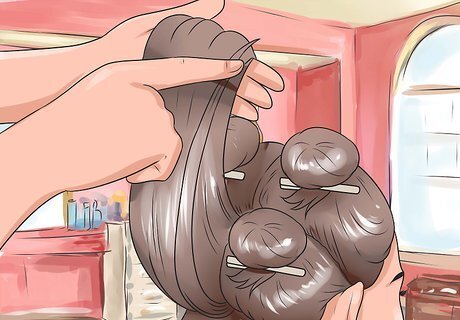
Determine the length of the second layer. Unclip the left section and let and hang over the bottom layer. Use the bottom layer as a guide to determine how much hair to trim off the second layer. The bottom and middle layers may differ 2 to 4 inches in long hair and ½ inch to 1 inch in shorter hair.

Cut the left segment. Gather a small segment of hair at the front left side to use as your first guide. Pull the segment of hair straight at a 90° angle. Slide your fingers towards the ends of the hair until you reach the point you would like to cut off. Trim the excess hair. Cut the remainder of the section with the aid of the traveling guide.
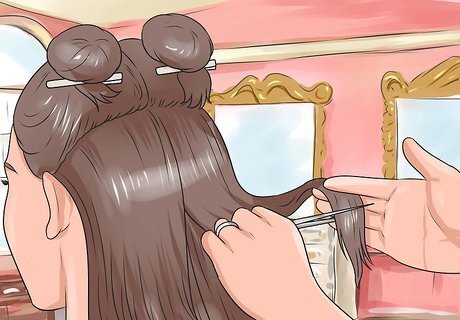
Cut the right section. Unclip the right section. Gather a small segment of hair at the front left side (your travelling guide) and the front right side. Insert the two segments between your middle and forefinger and pull them forward at a 90° angle. Stop your fingers at the end of the left segment. Trim the excess hair from the right segment. Cut the remainder of the section with the aid of the traveling guide.
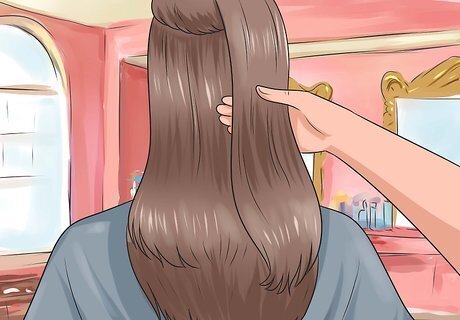
Determine the length of the top layer. Unclip the top section and let it hang over the middle layer. Use the layers below to help you determine the length of your top layer. The middle and top layers may differ 2 to 4 inches in long hair and ½ inch to 1 inch in shorter hair.
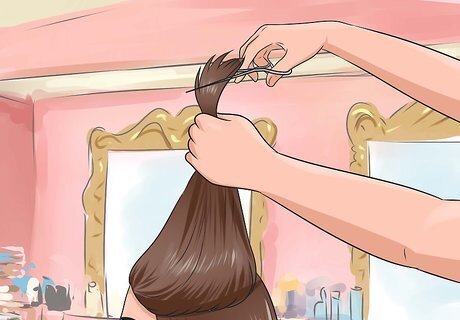
Cut the top section. Gather a small segment of hair at the top of the forehead. Pull the segment of hair straight at a 90° angle. Slide your fingers towards the ends of the hair until you reach the point you would like to cut off. Trim the excess hair. Cut the remainder of the section with the aid of the traveling guide.
Cutting All-Over Shaggy Layers

Comb through wet, clean hair. Shampoo and condition the hair prior to cutting your locks. Grab a towel and squeeze the excess water from the tresses. Comb through your hair to remove all the snags and snarls. Fill a spray bottle with warm water. As the hair dries, dampen it with the water from the spray bottle.
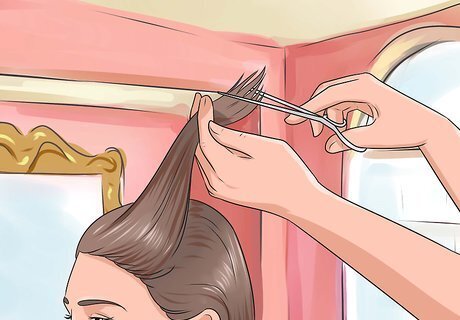
Cut the stationary guide. Throughout the haircut, you will use 1 stationary guide to measure against every segment of hair. This will produce shaggy layers at varying lengths throughout your hair. Section off a small segment of hair at the top of the head. Determine the length of the stationary guide—keep in mind that this will be your shortest layer. Grasp the stationary guide between the middle and forefinger of your non-dominant hand . Slide the fingers towards the ends while pulling the segment straight up at a 180° angle. Stop your fingers when they have reached the desired length. Trim the excess hair with sharp shears. Instead of cutting off too much hair, start gradually. Trim off 1 to 2 inches of hair from the stationary guide and complete the entire hair cut. If the hair is still too long, take another 1 to 2 inches off of the stationary guide and re-cut your hair.
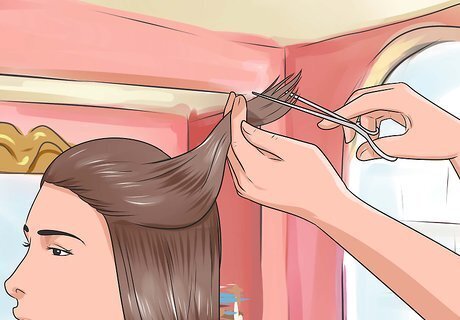
Cut the surrounding hair. Starting at the front of the head, insert a segment of hair surrounding the stationary guide and the stationary guide between your middle and forefinger. Slide your middle and forefinger towards the ends—pulling the hair at a 180° angle—until they reach the length of the stationary guide. Trim the excess hair. Repeat this process, working from to back down the center of the head.
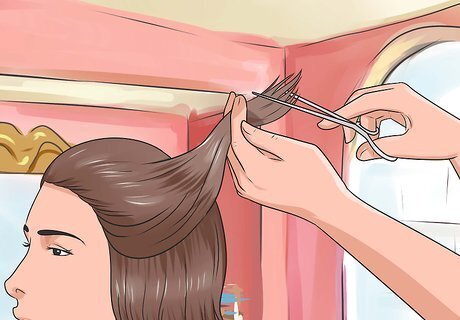
Cut the sides. To produce even layers, alternate between cutting segments on the left side and the right side. Insert a segment of hair and the stationary guide between your middle and forefinger. Slide your middle and forefinger towards the ends—pulling the hair at a 180° angle—until they reach the length of the stationary guide. Trim the excess hair. Repeat until all of the hair is cut.
Cutting Hair in a Ponytail

Remove knots from dry hair. Begin with dry, clean hair. Carefully brush the hair until it is smooth. Pay particular attention to removing any snarls or knots.
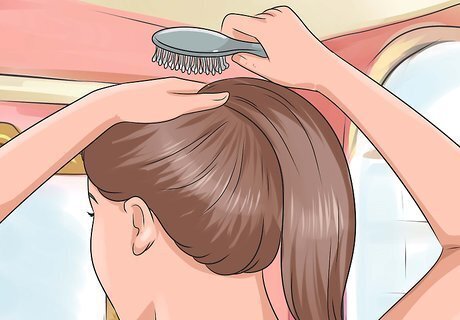
Brush the hair into a ponytail. Brush the hair forwards towards the forehead. Gather the hair into a ponytail at the base of the forehead. Secure it tightly with a rubber band. If you are cutting a client's hair, have them sit in a chair. If you are cutting your own hair, bend forward at your waist. Imagine that you are transforming your hair into a unicorn's horn. The ponytail should be located in the same place as a unicorn's horn.
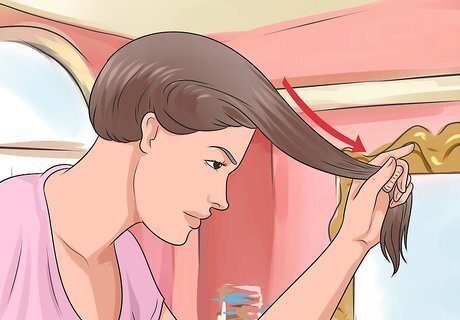
Position the rubber band near the bottom of the ponytail. Slowly slide the rubber band towards the ends of the hair. Stop 1 to 2 inches from the ends of the hair. Adjust the rubber band to the desired length—remember, it is always better to cut a little bit off at a time! If you are cutting your own hair, remain bent over at your waist.
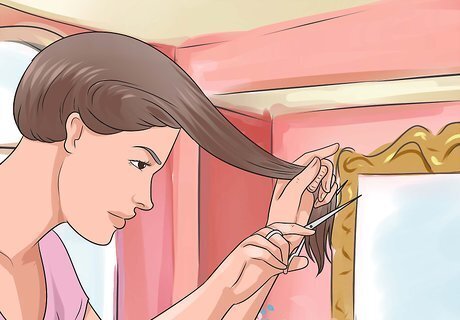
Cut the hair. Position your non-dominant hand securely over the rubberband. Using a pair of sharp shears, cut just below the rubber band. Set down the hair you cut off and assess the layered look. If you or the client want to cut off more hair, repeat the process. If you are cutting your own hair, stand up straight and try not to shift your hair or the position of your hand.



















Comments
0 comment